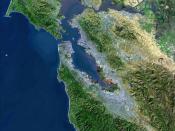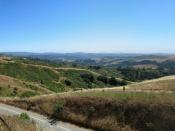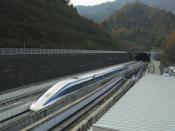Imagine that you had to travel from the San Francisco Bay Area to Los Angeles in a hurry. What mode of transportation would you choose? You could travel by airplane, but you would likely be forced to deal with the hassle of acquiring tickets, traffic delays to and from the airport, and numerous security delays within the airport. You could travel by automobile, but that would mean eight hours of time spent sitting behind a steering wheel staring at miles and miles of asphalt. You could choose a more scenic route and "ride the rails", but if you took Amtrak's coastal route, for example, your trek would last nearly twelve hours. By Amtrak's inland route, which requires transfer to a bus link in Bakersfield, your trip would take about nine hours (Mahtesian, 27).
Dilemmas such as this could soon be abated if the California Intercity High Speed Rail Commission is granted its wish.
The commission, created in 1993 by an executive order from the state, hopes to introduce a new generation of super trains that will whisk travelers to and from the Bay Area and the Los Angeles area. The journey from San Francisco to Los Angeles would drastically be shortened to just two or three hours. Presently, high-speed railway systems exist in Spain, France, Italy, Germany, Japan, and Sweden, among other places. In the United States, however, the closest thing that we posses is the Amtrak Metroliner, which runs between Washington and New York and achieves a maximum speed of about 130 miles per hour (Ross, 7).
With highways that were originally designed to carry us into the twenty-first century already filled to capacity, our country is in desperate need of an alternative form of transportation. Traffic congestion in the areas near our nation's airports, as well as air...


